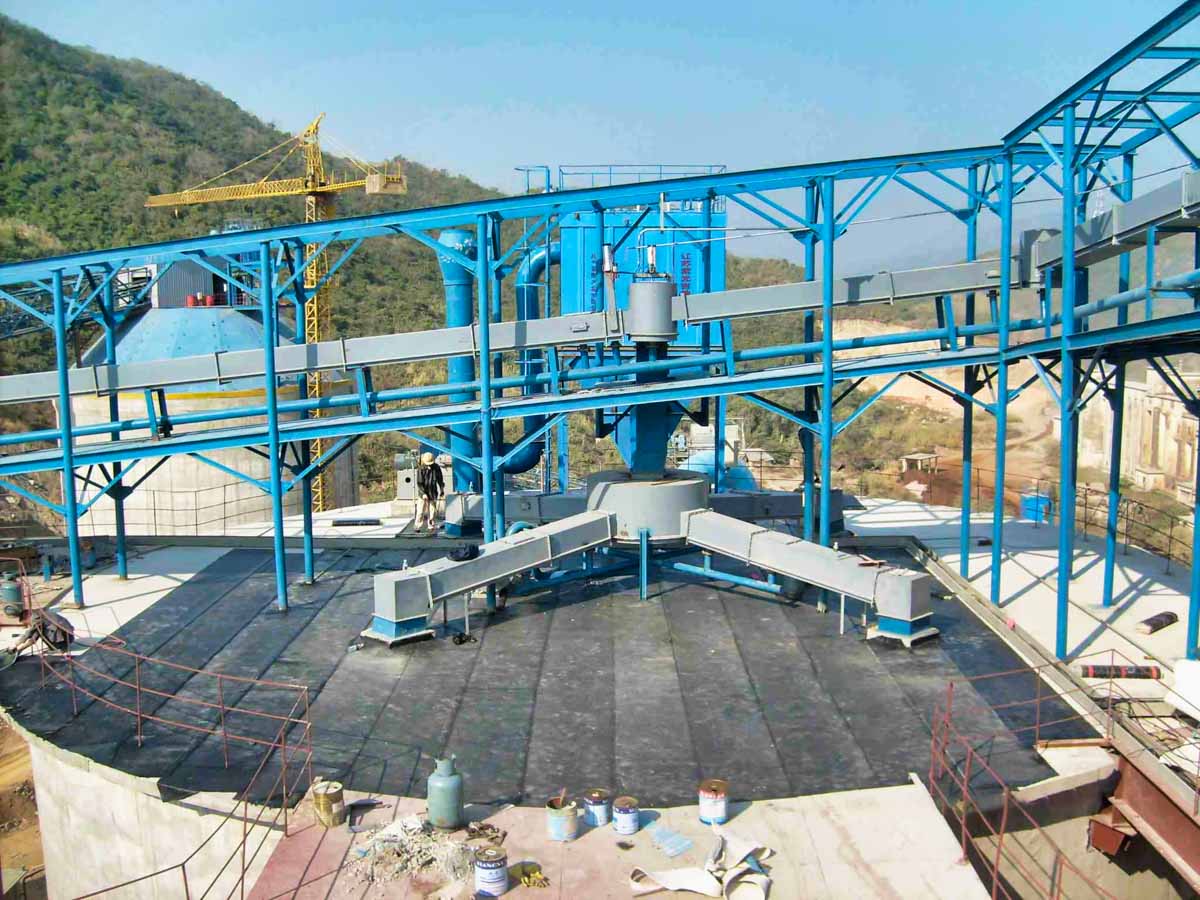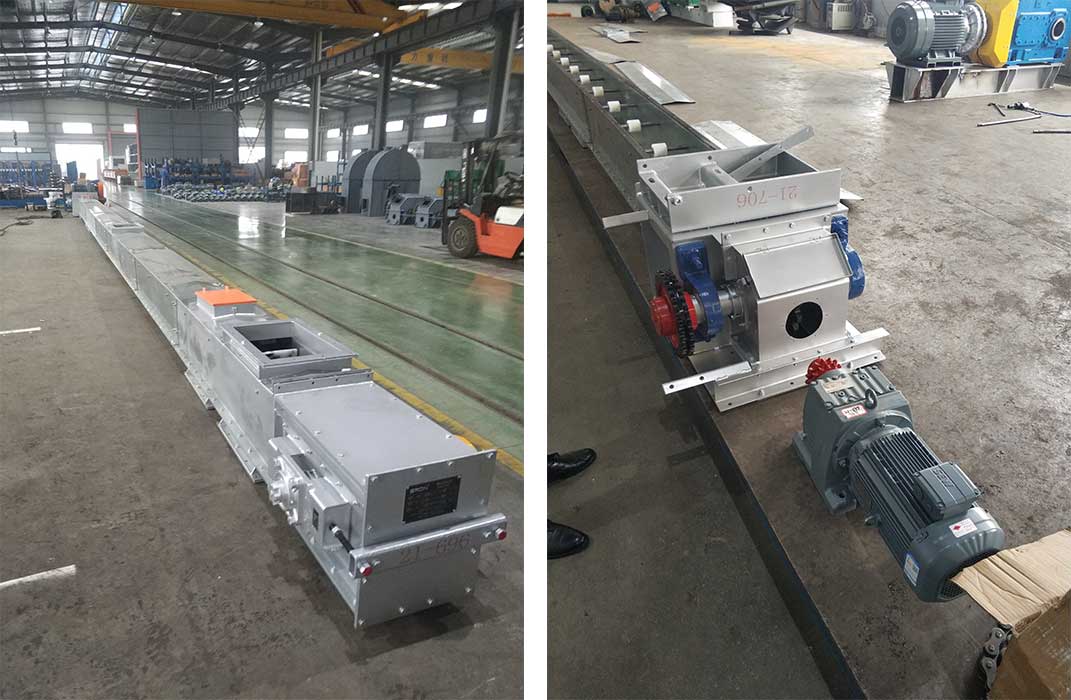Conveying equipment has become an indispensable component of modern industrial systems. From cement production to grain storage, from metallurgical processing to mining transportation, conveying equipment, with its high efficiency and stability, has significantly improved production efficiency and material management. Especially in steel silo storage and bulk material transportation, the appropriate choice of conveying equipment directly determines the reliability and economic efficiency of the process.
1. Air Chute
An air chute is a device that uses a high-pressure centrifugal fan to generate airflow, fluidizing the material within the chute for conveying. Due to its unique operating principle, air chutes are widely used in conveying powdered materials such as cement and chemical raw materials.
Applications
Conveying cement clinker and cement powder
Storage and transportation of powdered materials such as chemical raw materials, fly ash, and lime powder
Unloading and uniform conveying of materials from steel silos
Advantages
Low wear: The air chute has no rotating parts, resulting in low friction and long equipment life.
Low energy consumption: Compared to mechanical conveying, it offers lower energy loss and better economics.
Good sealing: The compact structure and strong sealing effectively prevent dust leakage and material contamination.
Safe operation: Reliable operation, capable of multiple loading and unloading points and changing conveying direction.
Disadvantages
It can only be used at a certain inclination angle and cannot convey materials vertically or at large angles.
It has high material requirements and is only suitable for dry, uniformly sized powders.
The conveying capacity and distance are limited, making it unsuitable for long distances or large particles.
2. Belt Conveyors
Belt conveyors are one of the most common conveying equipment. They carry materials on flexible conveyor belts, driven by rollers and tensioning devices, enabling continuous material transport.
Applications
Bulk ore and coal transportation in the mining and metallurgical industries; Bulk material transportation in the building materials, chemical, and power industries; Packaged and bulk material transportation in grain processing and food production.
Advantages
High throughput and reliable operation: Enables long-term continuous operation and high transport efficiency.
Low energy consumption: Low energy consumption per unit of material transported, resulting in significant energy savings.
Adaptability: Flexible conveyor routes allow for traversing complex terrain and environments.
Low noise: Smooth operation with low noise levels. Enclosed systems can be used to reduce dust when necessary.
Disadvantages
Complex structure: Requires numerous components and maintenance, resulting in a long installation cycle.
Large floor space requirements: Especially for conveying with large height differences, requires a high floor space requirement.
Poor sealing: Highly susceptible to dust and material leakage, requiring dust control devices.
3. Screw Conveyors
Screw conveyors propel materials through a trough using rotating spiral blades. Due to their simple structure and adaptability, they are widely used in industry.
Applications
Horizontal or inclined conveying of powdered, granular, and small-block materials
Building materials industry (cement, lime powder), chemical industry (plastic granules, chemical powders)
Grain industry (wheat, corn, beans, etc.)
Raw material transportation in power, metallurgy, coal, and other industries
Advantages
Simple structure: easy to manufacture and low maintenance.
Adaptability: capable of conveying a variety of material forms and adapting to high and low temperatures and corrosive environments.
Excellent sealing: effectively prevents material leakage and environmental pollution.
Energy-saving and environmentally friendly: smooth operation, low energy consumption, and low noise and vibration.
Disadvantages
Conveying distances are limited, typically no more than a few dozen meters.
Humid or sticky materials can adhere to the blades, causing blockage or unstable operation.
4. Scraper Conveyor
A scraper conveyor uses scraper chains moving within a trough to propel materials. It can operate both horizontally and at an angle, making it particularly suitable for transportation in mines and ports.
Applications:
Underground coal and gangue transportation in mines
Bulk material loading and unloading at ports and docks
Pulverized coal and other powdered materials transportation in power plants
Multi-point loading and unloading of steel silo systems
Advantages:
Large transport capacity: Capable of carrying large quantities of material, suitable for high-intensity working conditions.
Reasonable structure: Flexible installation, disassembly, and assembly for ease of use.
Good sealing: Prevents dust leakage and improves the working environment.
High adaptability: Operates in complex working environments with high reliability.
Disadvantages:
High energy consumption: Compared to air chutes and belt conveyors, it consumes more energy.
Severe wear: Chains and chutes wear quickly, requiring regular maintenance.
Noise: Noticeable impact and friction noise during operation.
| Device Type |
Application Scenario |
Advantages |
Insufficient |
| Air Chute |
Unloading cement powder, chemical powder, and steel silo |
Low wear, low energy consumption, good sealing, and reliable operation |
Limited to a certain inclination angle, not vertical; High material requirements; Limited conveying capacity and distance |
| Belt conveyor |
Ores, coal, bulk materials, grain and packaging |
Large conveying capacity, low energy consumption, strong adaptability and low noise |
Complex structure, large area, poor sealing and easy to leak |
| Screw conveyor |
Powdered/granular/small pieces of materials, building materials, chemicals, food, electricity |
Simple structure, strong adaptability, good sealing, energy saving and environmental protection |
Conveying distance is limited; wet and sticky materials are prone to clogging |
| Scraper conveyor |
Mine raw coal, gangue, port loading and unloading, power plant coal powder, steel silo multi-point loading and unloading |
Large transportation capacity, flexible installation, good sealing and strong adaptability |
High energy consumption, severe wear and tear, and loud noise |
In actual engineering applications, factors such as material properties (dryness/humidity/particle size), conveying distance, conveying volume, installation environment, and economic costs should be comprehensively considered to rationally select appropriate conveying equipment to achieve a balanced balance of efficiency, economy, and reliability. Conveying equipment is a crucial cornerstone of industrial production and warehousing logistics. Whether it’s the low energy consumption and sealing of air chutes, the long-distance and high efficiency of belt conveyors, the economical and practical use of screw conveyors, or the high strength and high capacity of scraper conveyors, each type of equipment has its irreplaceable value. Only by combining it with actual process requirements and leveraging its strengths and avoiding its weaknesses can conveying equipment truly maximize its benefits in modern industry.


.jpg)
.jpg)
